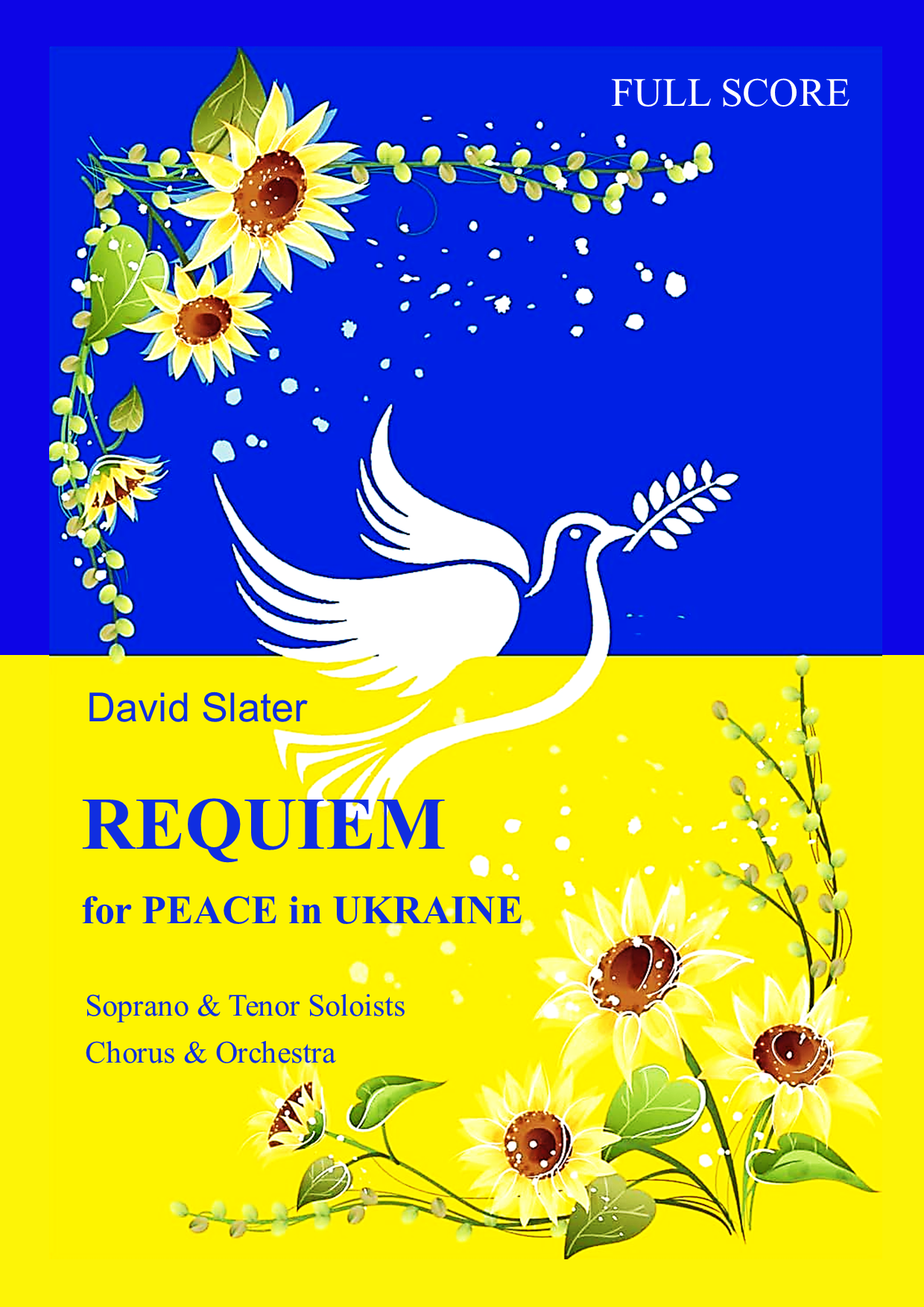
In recent years, David completed a new major work which is dedicated to raising funds for those in great need around the world. It has two subtitles which reflect the dual crises for which funds can be raised. Read on to find out about this work, and become involved in a performance of the Requiem wherever you are in the world.
World Premiere: Olomouc, Czech Republic: 2 June 2023
The Premiere was a great success, with standing room only in the Cathedral of St Moritz. A wonderful performance by the Moravian Philharmonic Orchestra, with Czech Choirs and soloists from Ukraine and Belarus was given a standing ovation, a special blessing from the Archbishop of Moravia and very large donations were made to assist refugees from the war in Ukraine.
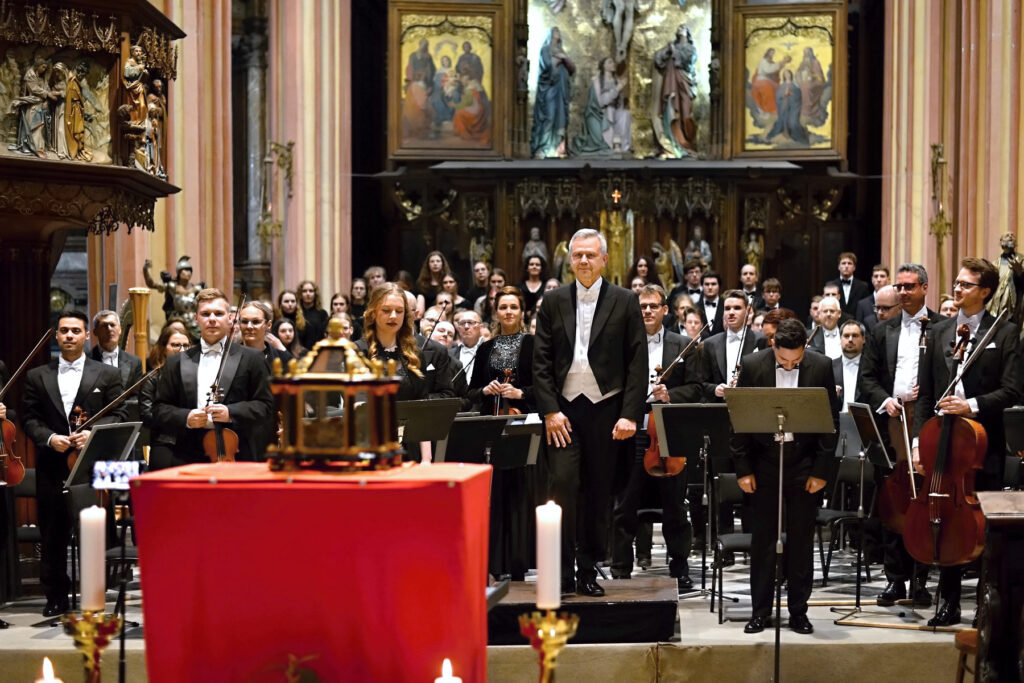
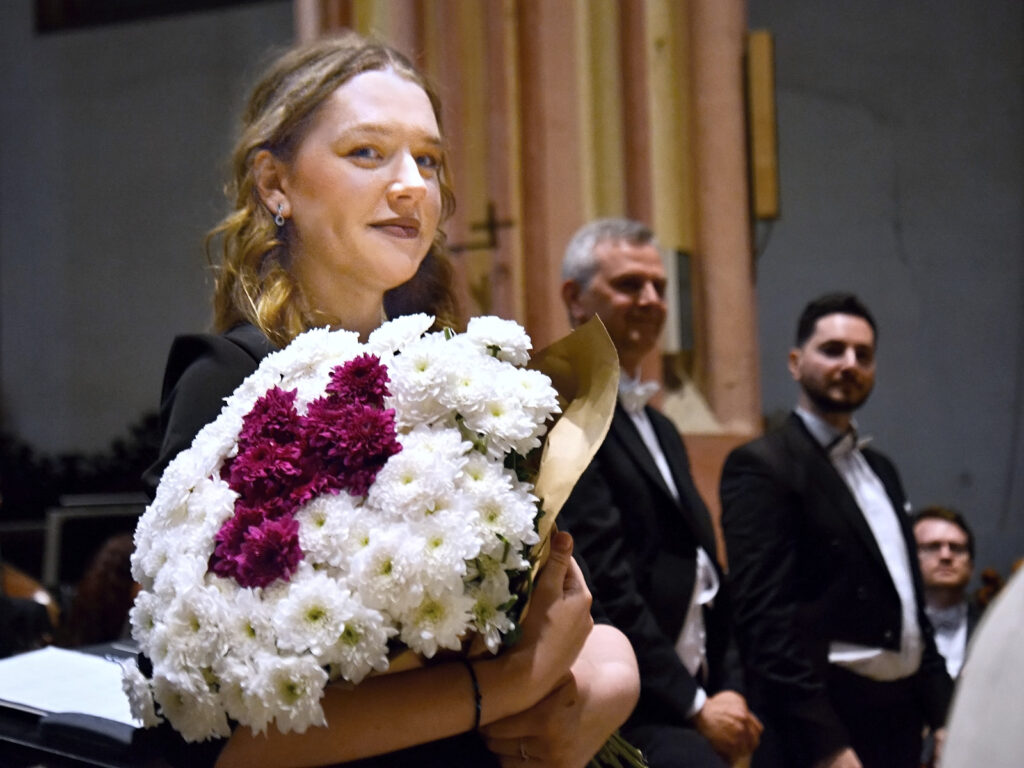
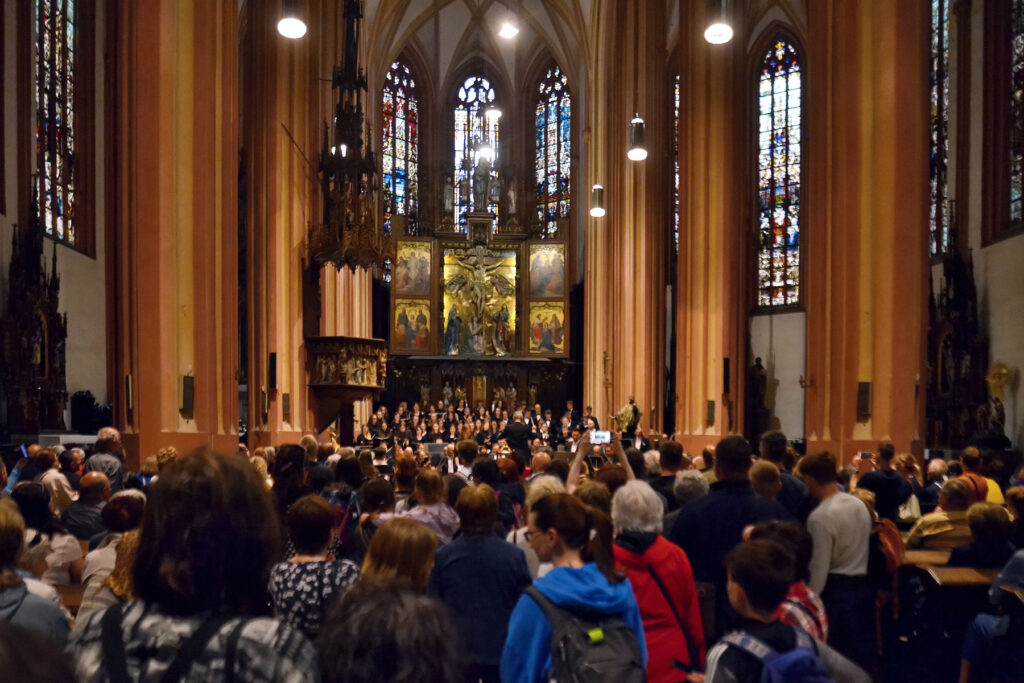
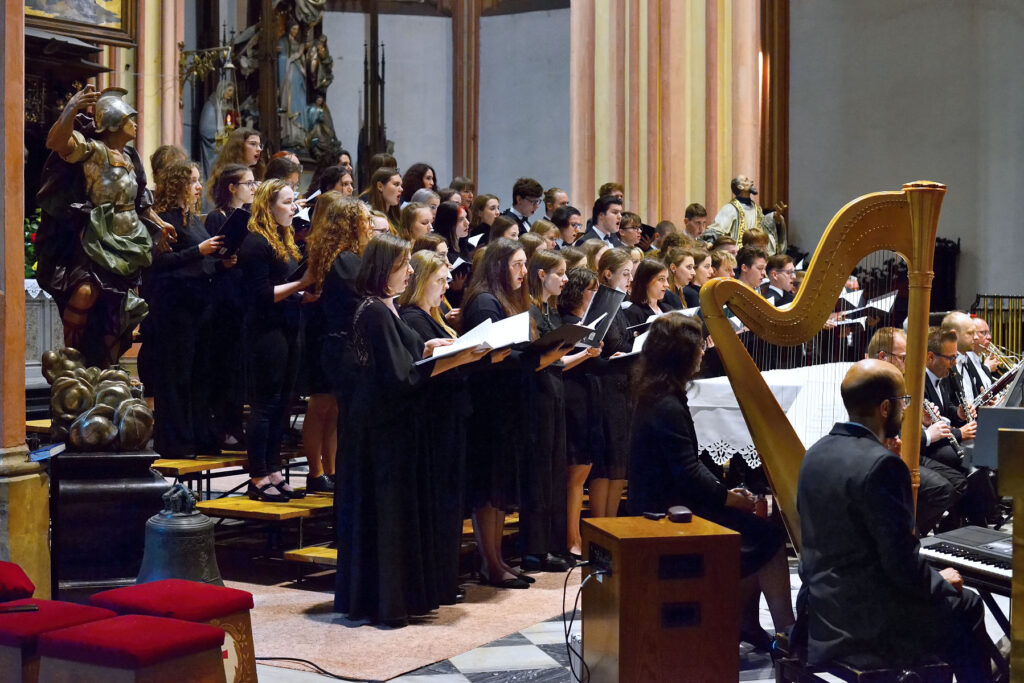
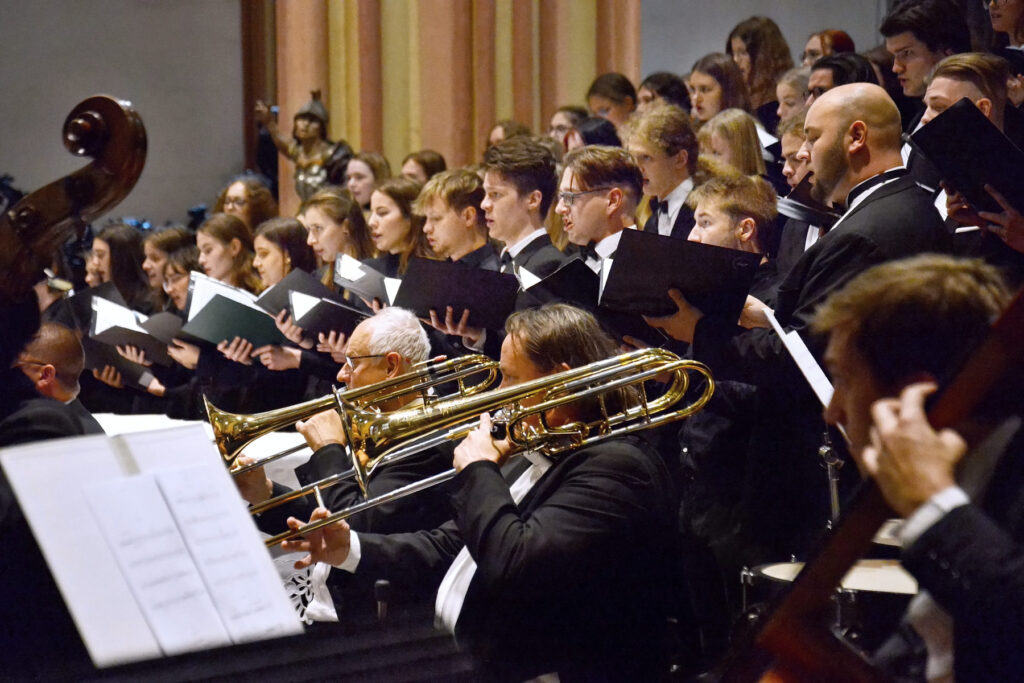
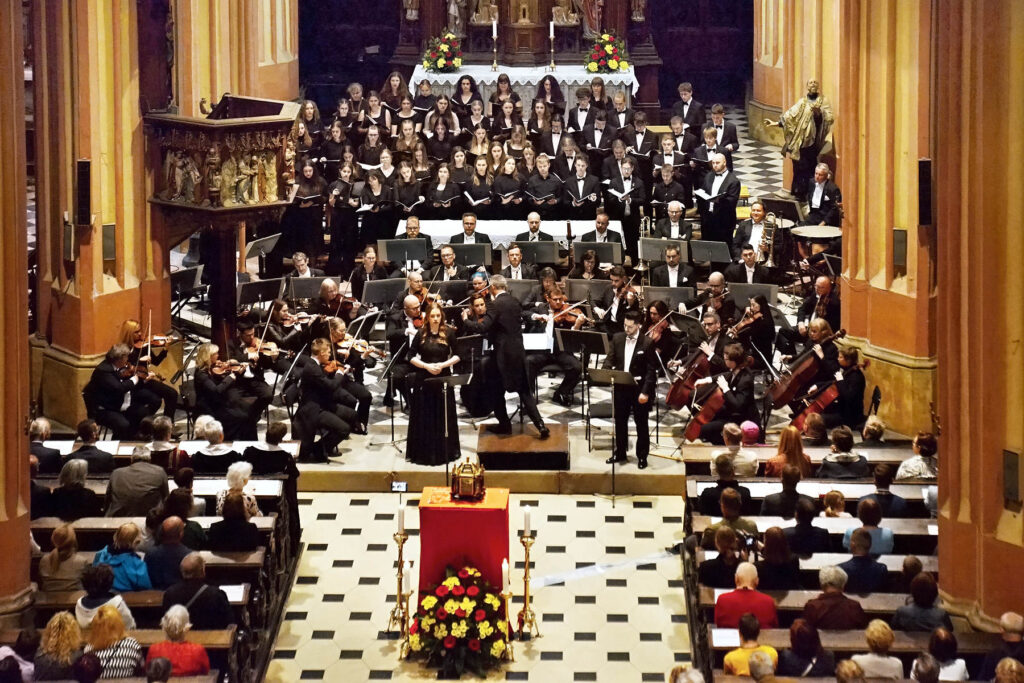
Read on to discover more about the work ….
The idea to compose this work first came from a colleague in Portugal. They have worked together at various international events over several years, and in 2019 in Sweden they discussed the idea of composing a new Requiem. David is grateful for planting the seed of this idea, though how it would work out took almost 18 months to realize.
A busy conducting schedule and other compositions delayed commencement of the project, yet when everything stopped with pandemic restrictions, the time was right to work intensely on it for several months. As the pandemic worsened and spread around the world, the idea grew and the resulting work was completed, with the title Requiem for the Victims of COVID-19. Since then a senseless war has been brought upon the people of Ukraine, with millions of refugees, mostly women and children forced to flee the terrible violence. With this the Requiem now has a second title: Requiem for Peace in Ukraine.
It is 55-60 minutes long and scored for soprano and tenor soloists, large chorus and orchestra. It is composed in a style designed to be greatly engaging for the choirs who sing it and audiences who listen, while always reflecting on the solemn texts of the Latin Requiem. This was critical for David as he worked on the piece – that the music should convey a deeply meaningful interpretation of the texts while communicating freely with both singers and audiences.
The musical language is loosely tonal/modal, and draws on past and more recent choral traditions. The sound-world of the Requiem is therefore never too distant. There are moments of anguish, of great intensity, and of grandeur, while at other times there is quiet beauty and opportunity for contemplation. Some small moments in the work hint, though not too obviously, at the great Requiems of Mozart, Verdi and Fauré in honour of these earlier masters.
As well as the orchestral score, a vocal score with organ reduction of the orchestral parts is also available. The choral parts are written so that amateur and student choirs can learn and sing the Requiem without undue pressure, and professional choirs will not require excessive rehearsal time.
From the beginning the goal was for singers from many cities, or even countries, to gather to perform the work as a large combined choir. Performances would raise funds to be donated where need is the greatest. After costs are recovered (by fees for participating choirs, ticket sales and donations, perhaps even by sponsorship) profits could be made available to World Health Organisation vaccine programs or the United Nations High Commission for Refugees.
The work is structured as follows:
I Introit: Requiem aeternam chorus, tenor solo & orchestra
II Kyrie eleison chorus & orchestra
III Sequence:
- Rex tremendae soprano solo, chorus & orchestra
- Dies irae chorus & orchestra
- Tuba mirum soprano & tenor soli, chorus & orchestra
- Recordare soprano & tenor soli, chorus & orchestra
- Confutatis tenor solo, chorus & orchestra
- Lacrimosa soprano & tenor soli, chorus & orchestra
- Pie Jesu chorus & orchestra
IV Offertorium:
- Domine Jesu chorus & orchestra
- Hostias soprano & tenor soli, orchestra
V Sanctus chorus and strings
VI Agnus Dei chorus & orchestra
VII Communion:
- Lux aeterna chorus & orchestra
- Libera me tenor solo, chorus & orchestra
VIII In Paradisum chorus & orchestra
IX Amen chorus & orchestra
The Pie Jesu, Agnus Dei, Lux aeterna and In Paradisum can be performed acapella, individually or together as a short suite. These, along with the Lacrimosa and Sanctus can be performed with chorus and strings.
David invites choirs and organisations around the world to perform this new work. His hope is that choirs from several cities, regions or even countries will come together to rehearse the Requiem, and perform it with orchestra as a tangible way to assist those in need.
Everyone who plans a performance of the Requiem should contact us directly for performance materials:
- Full Score (pdf)
- Vocal Score with Organ (pdf)
- Audio Files of the whole work (mp3)
- Practice Files for each vocal part (mp3)
- Orchestral Parts for large or smaller orchestra (pdf)
